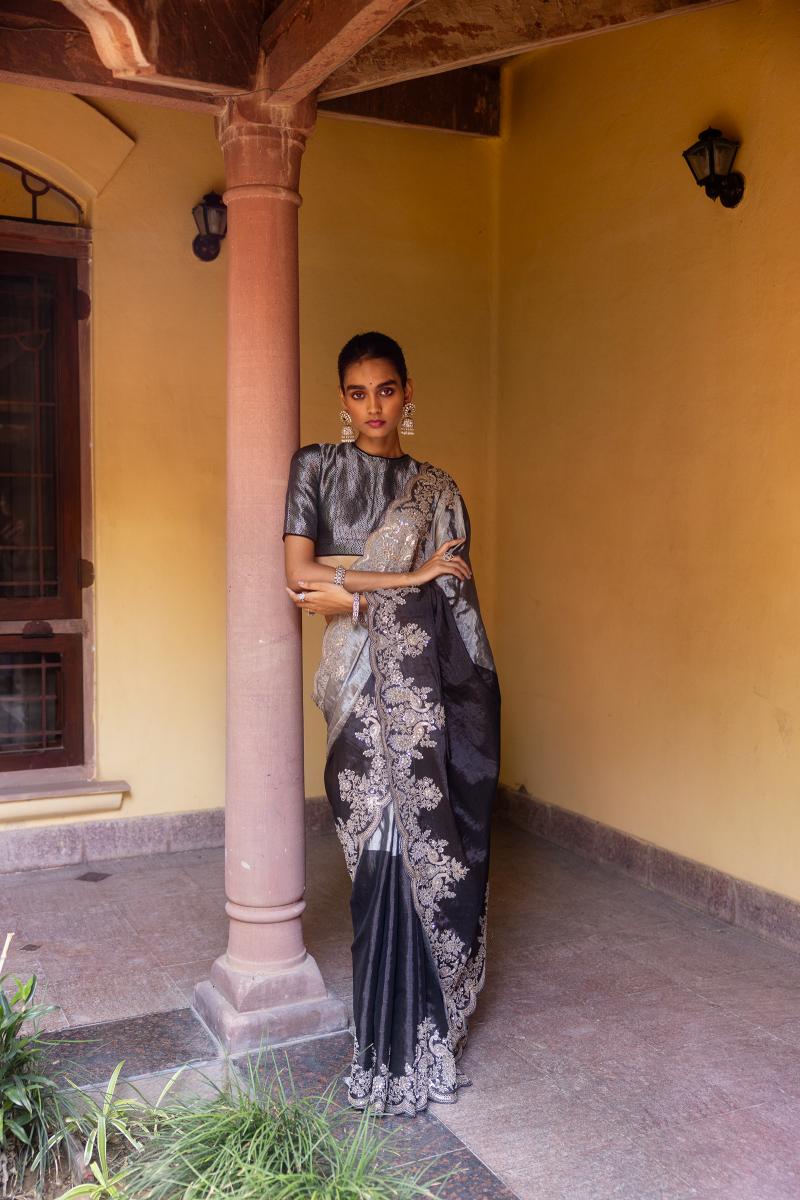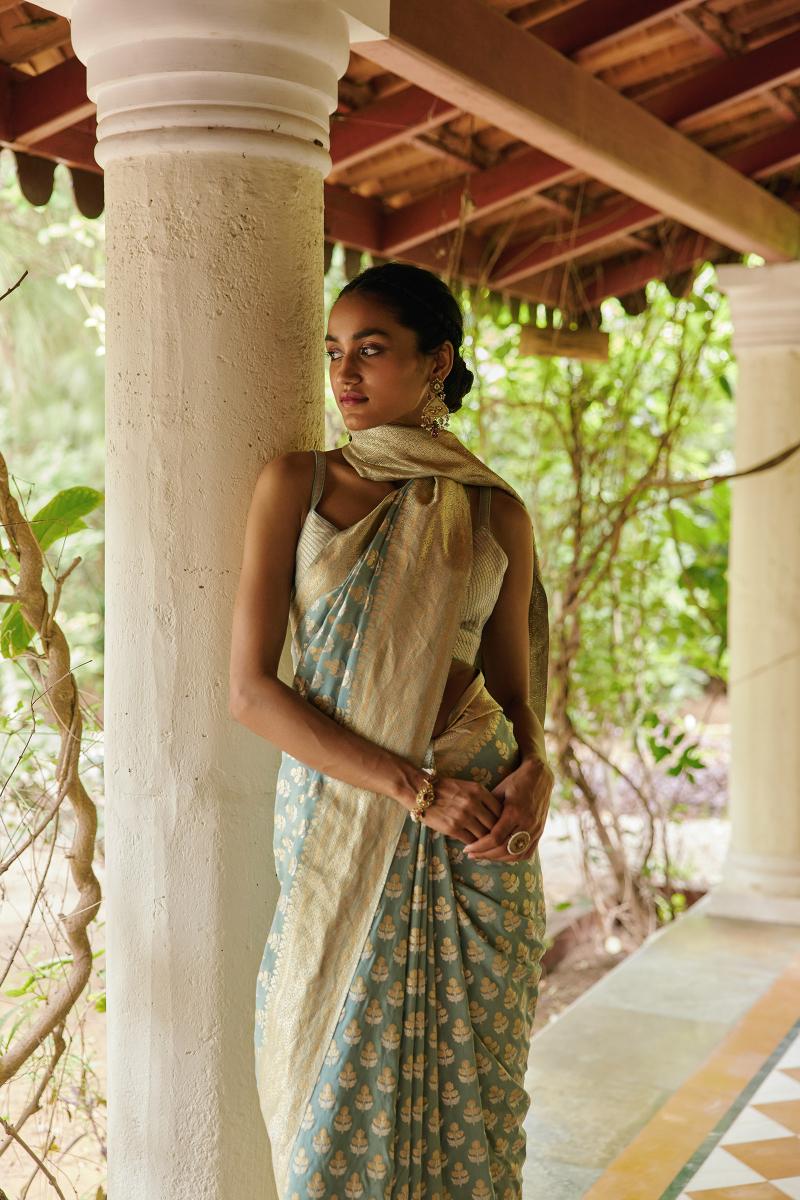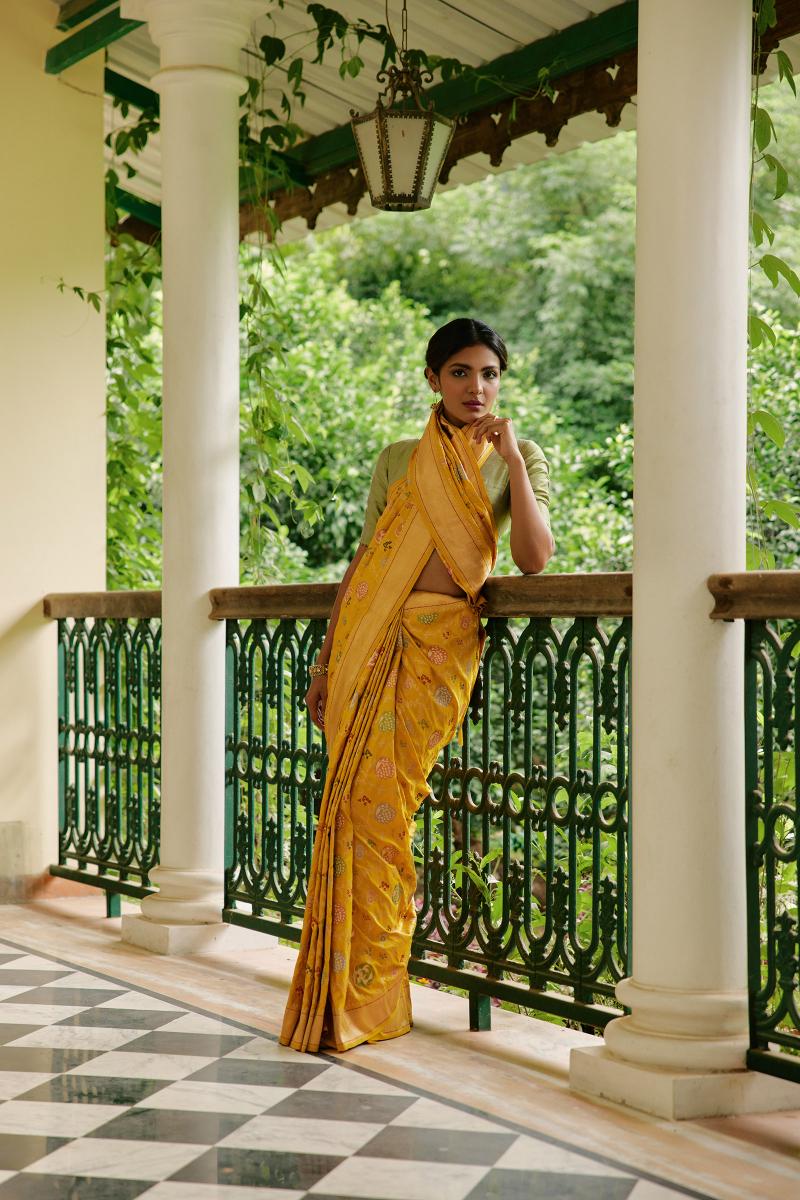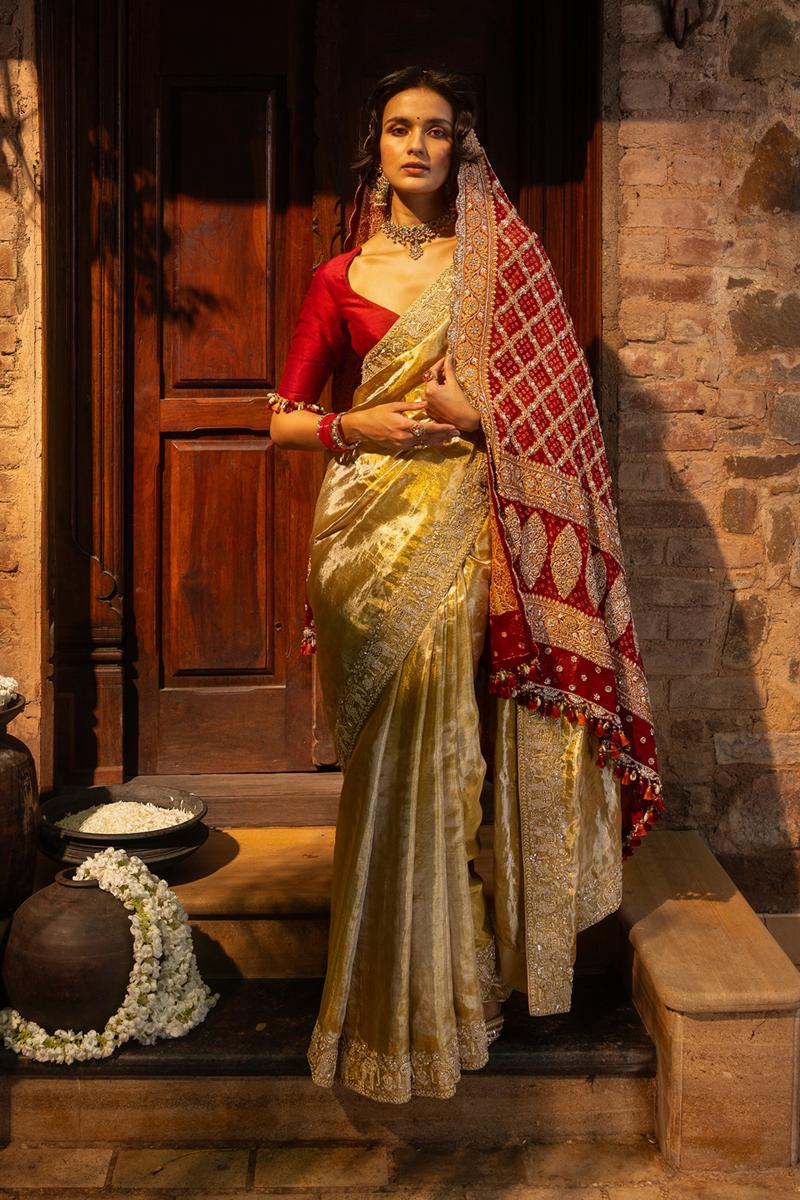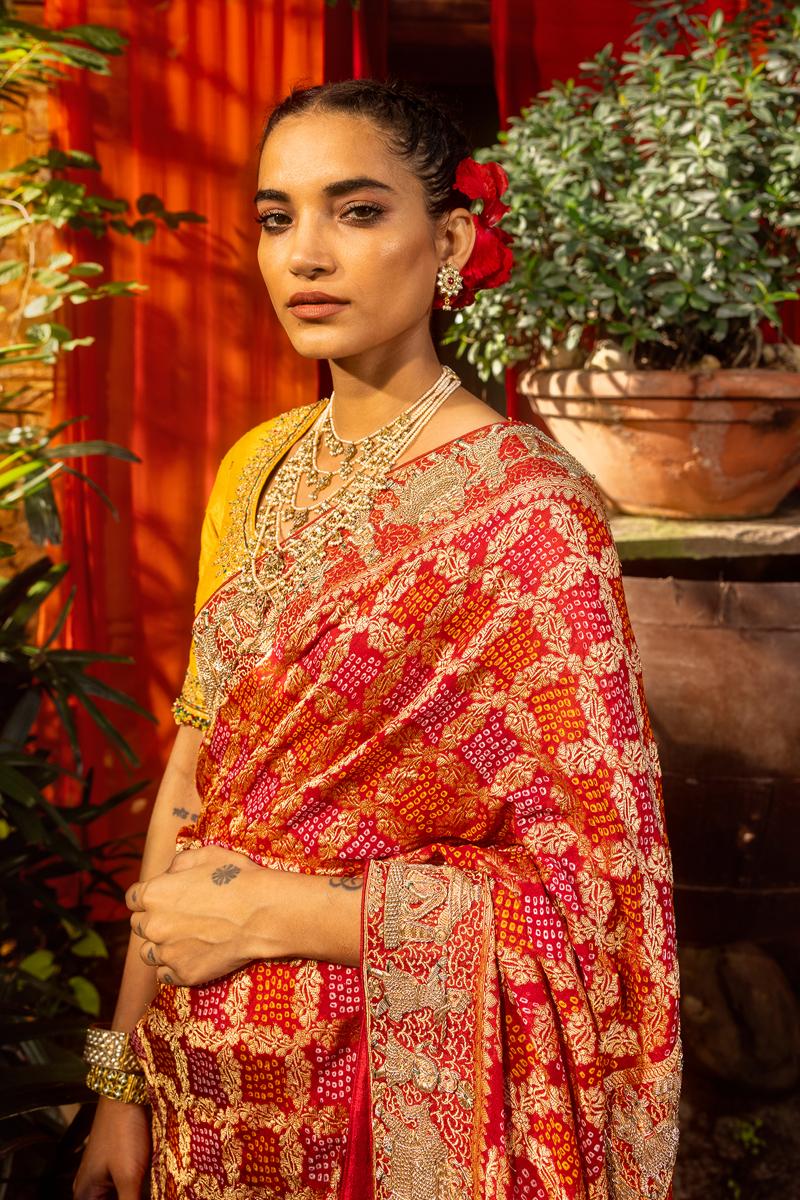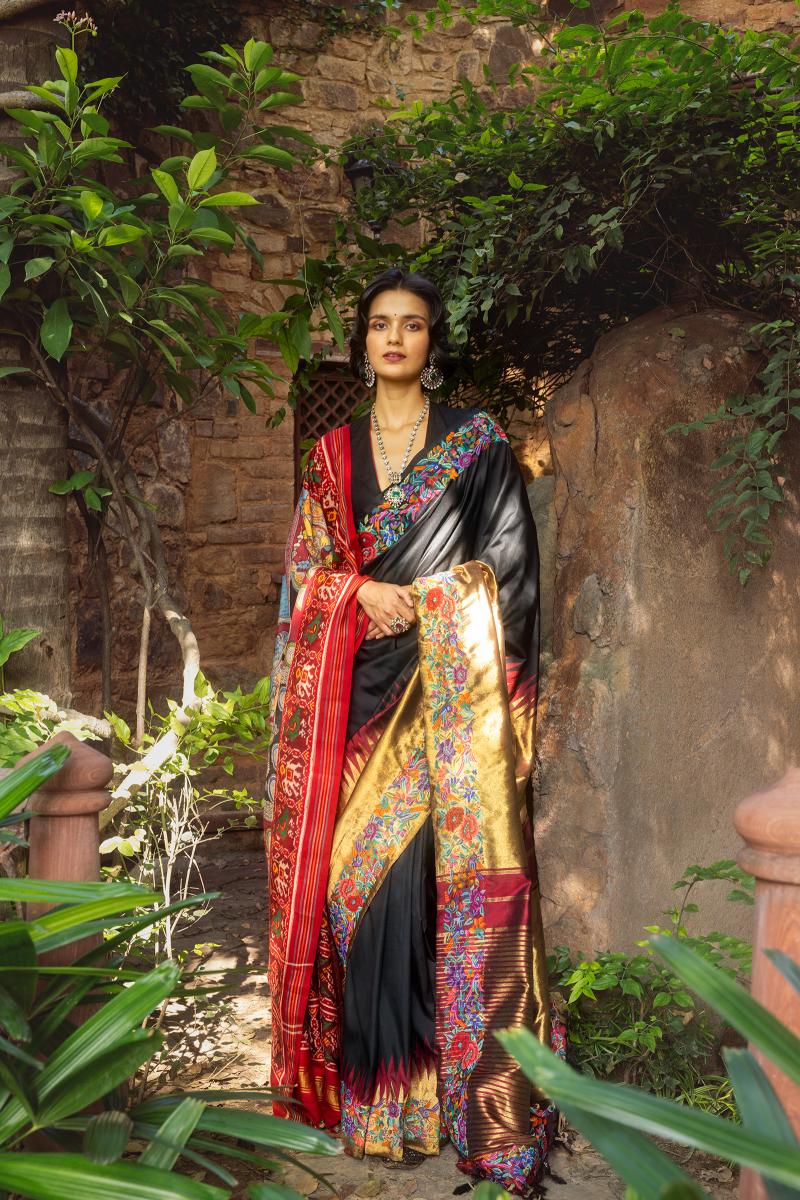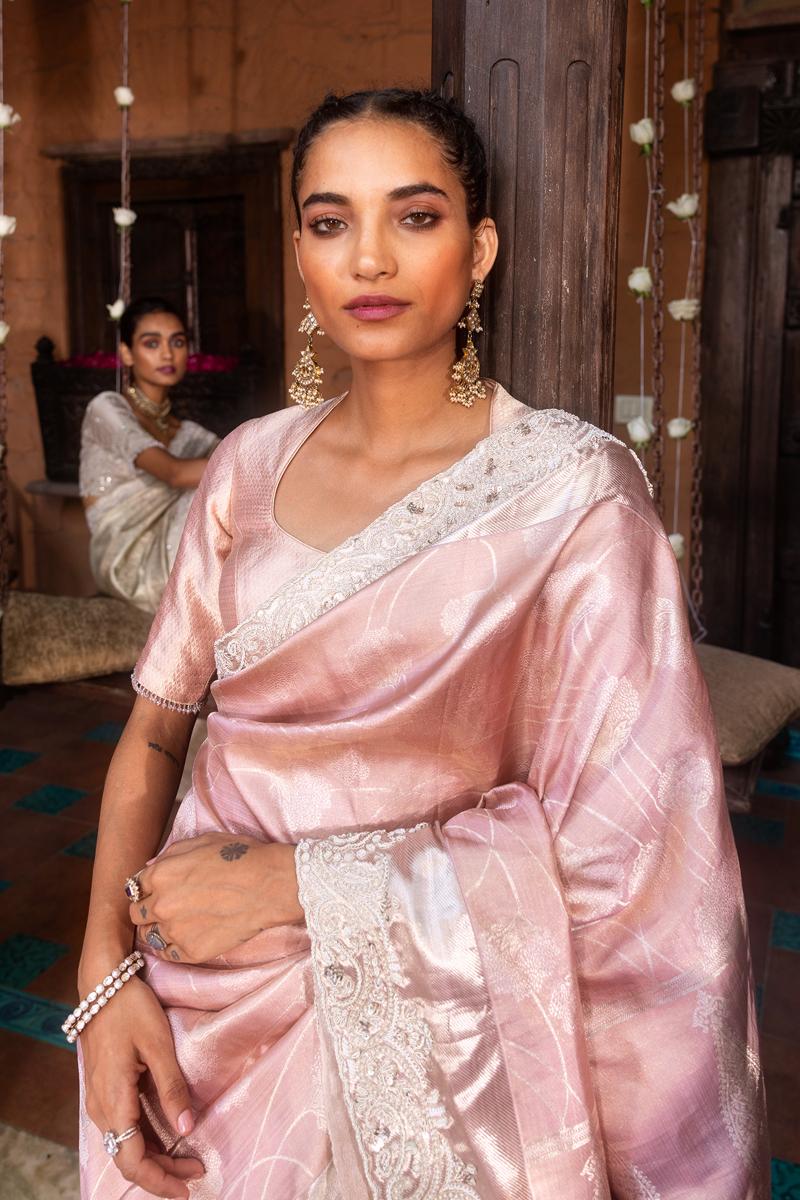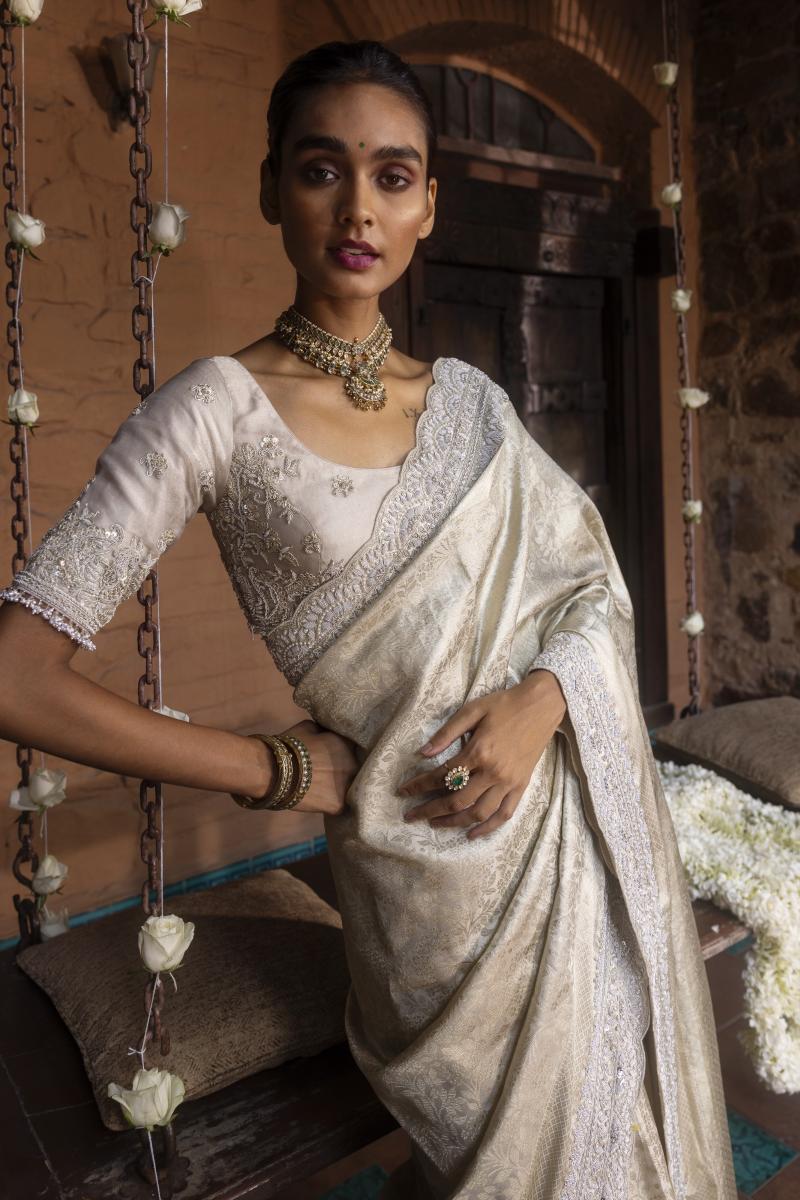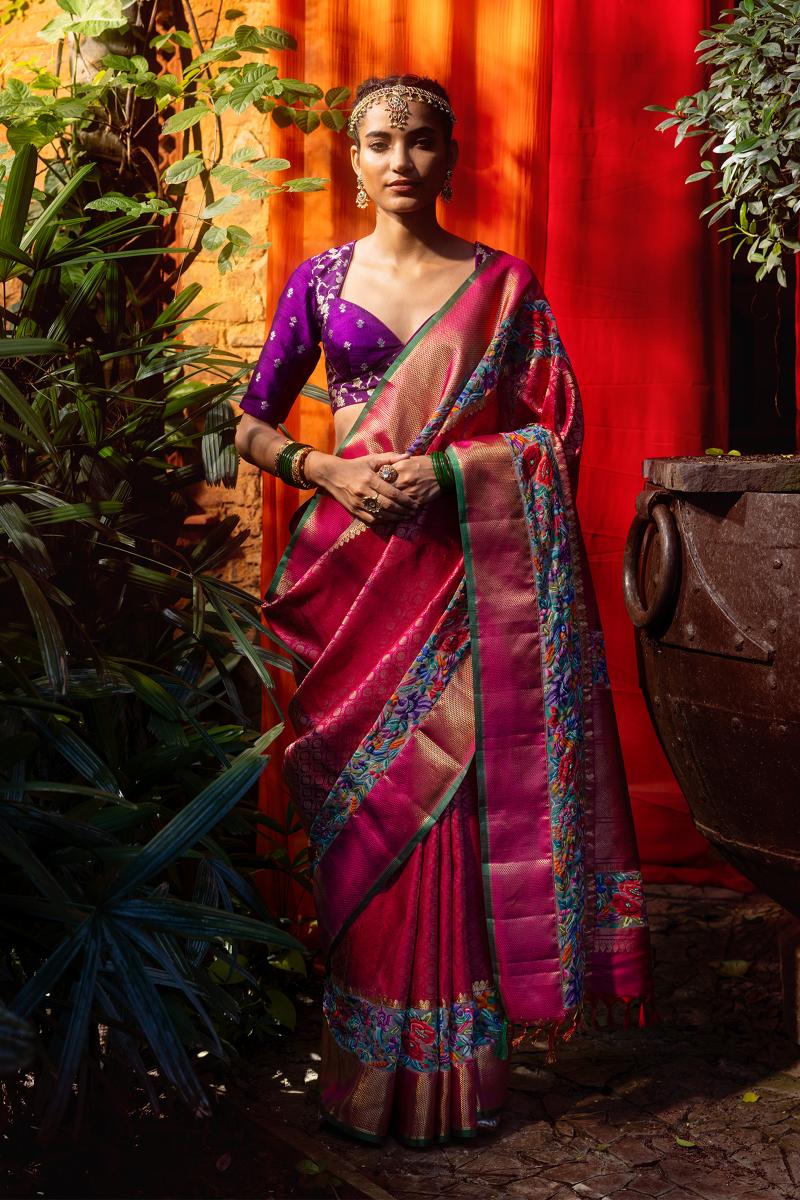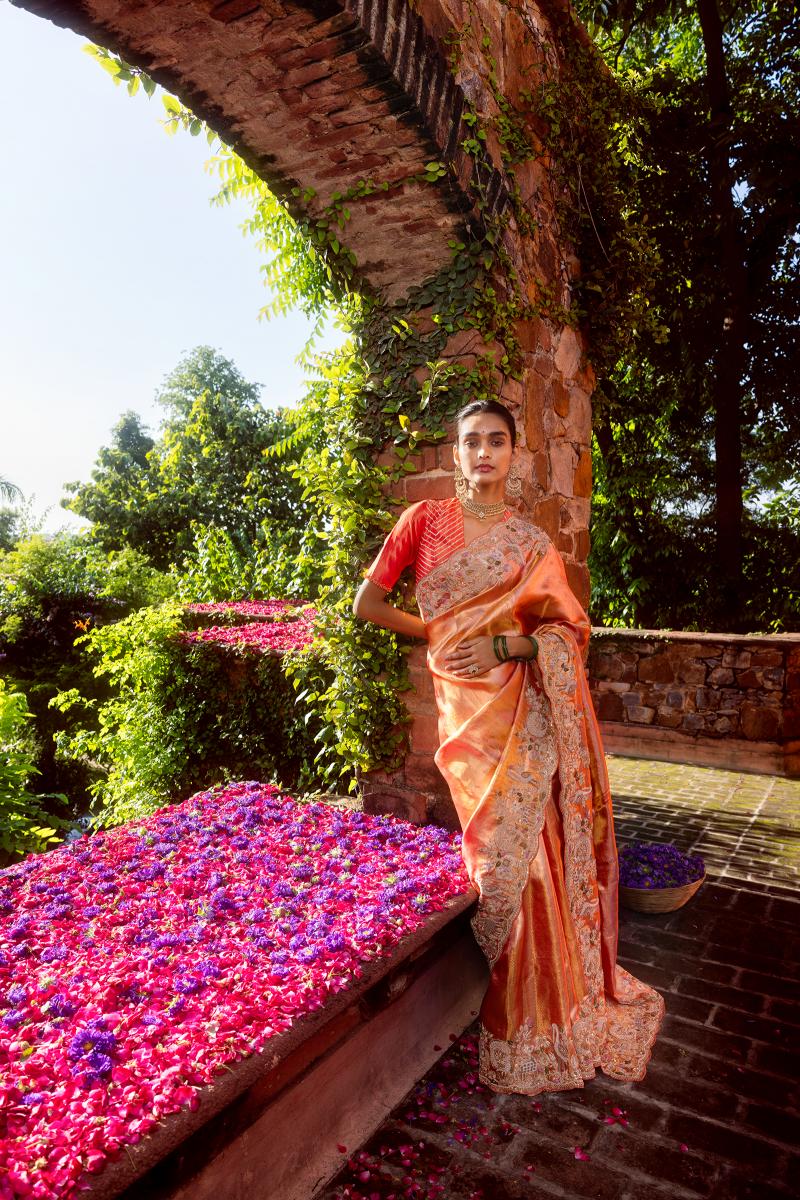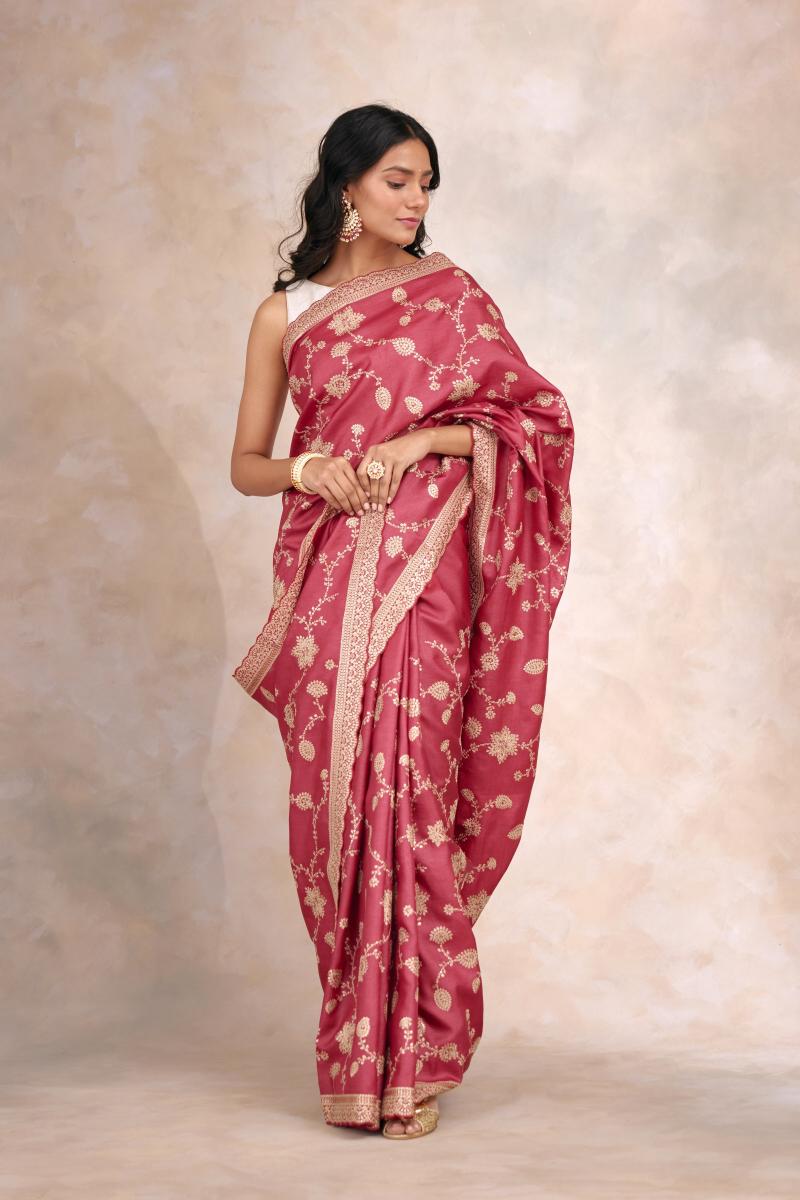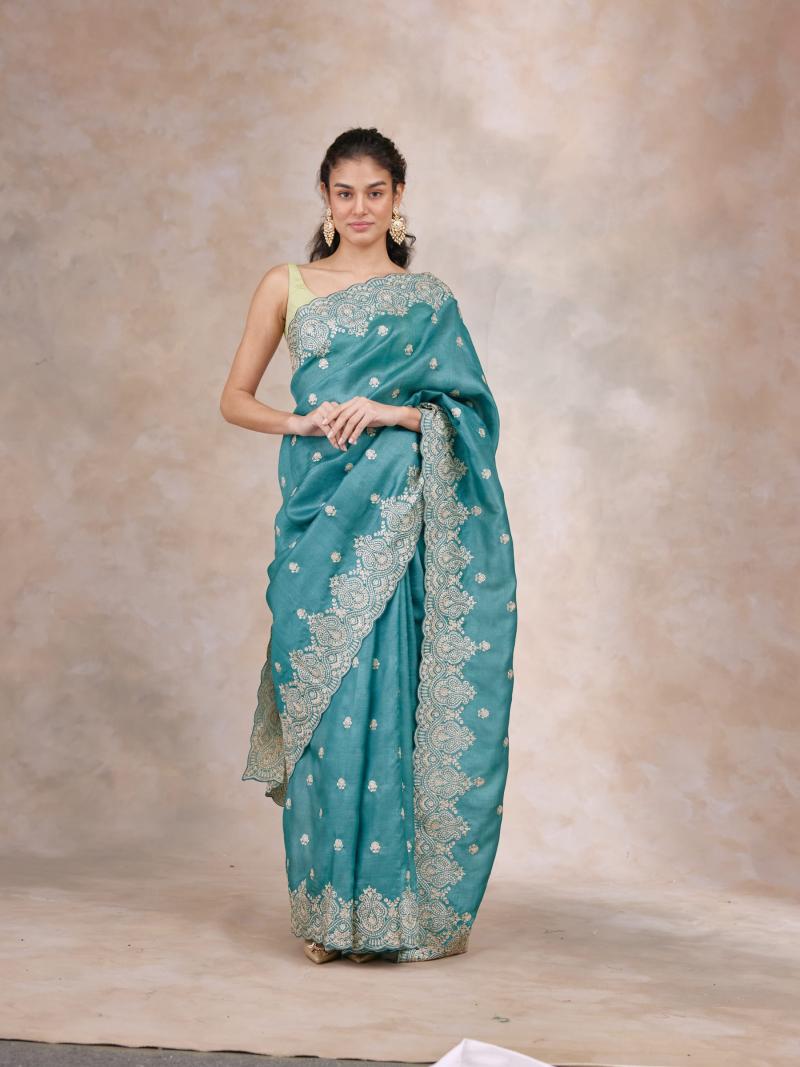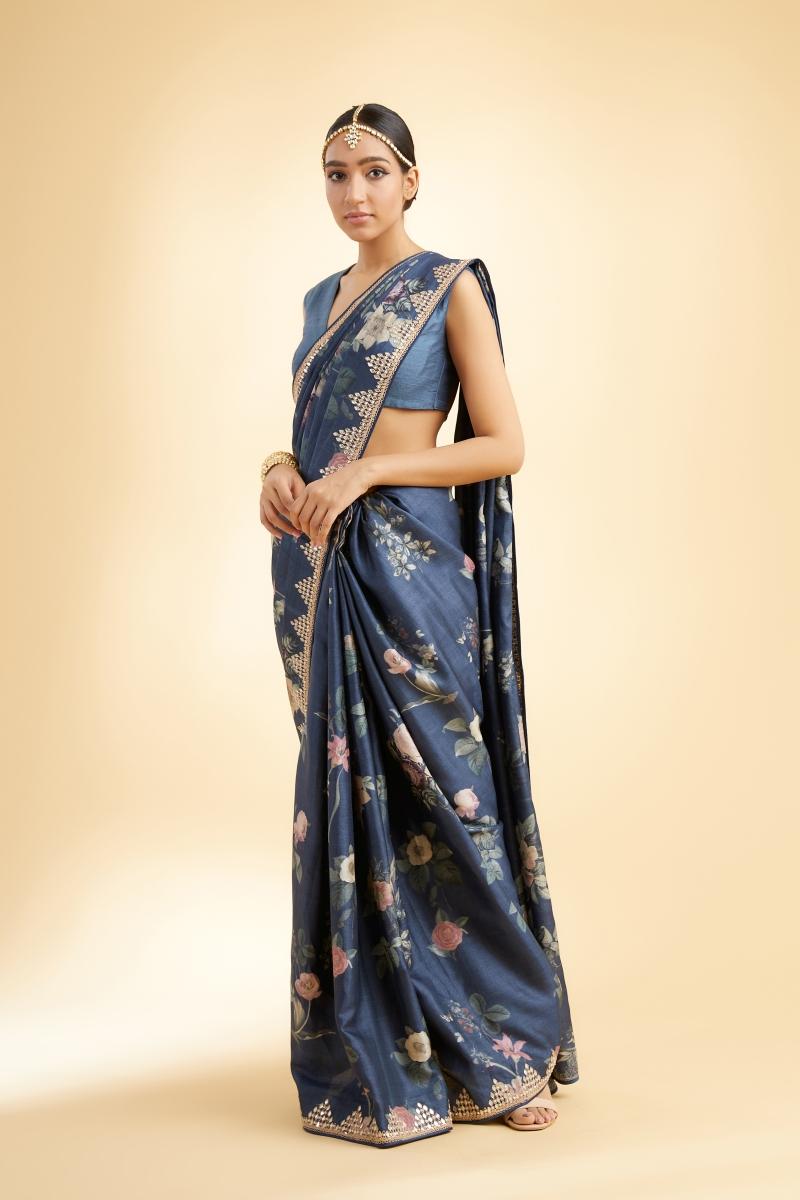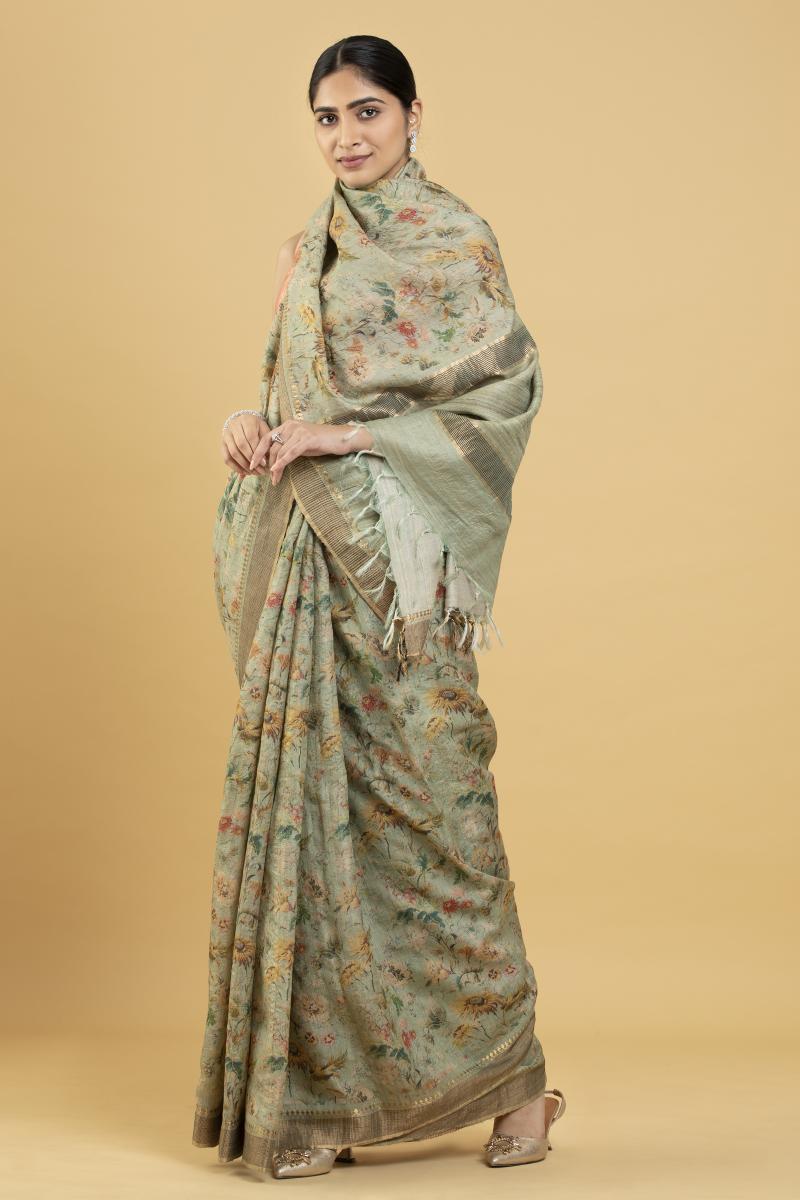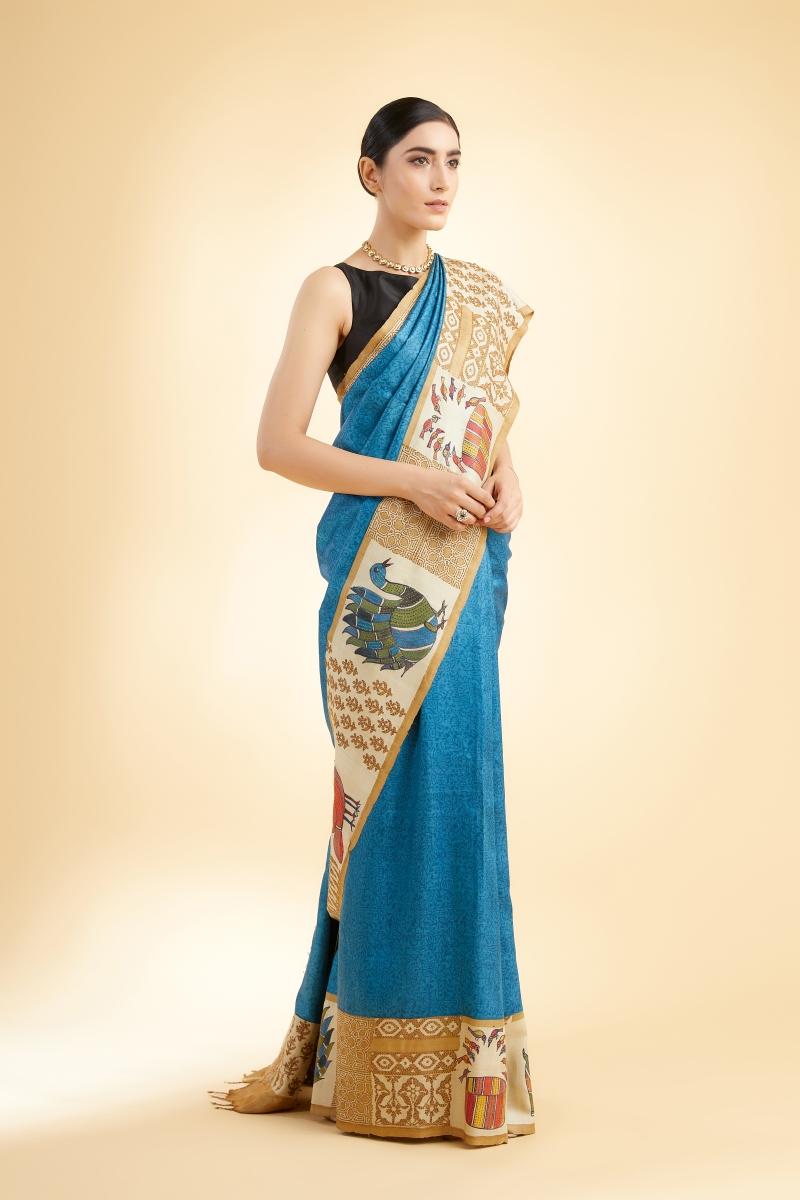Get 10% off on your first order. Use code FRONTIERRAAS10
Your Grandma’s Trousseau? They are cool now
From Kanjivaram to Banarasi: Types of Silk Sarees to Love
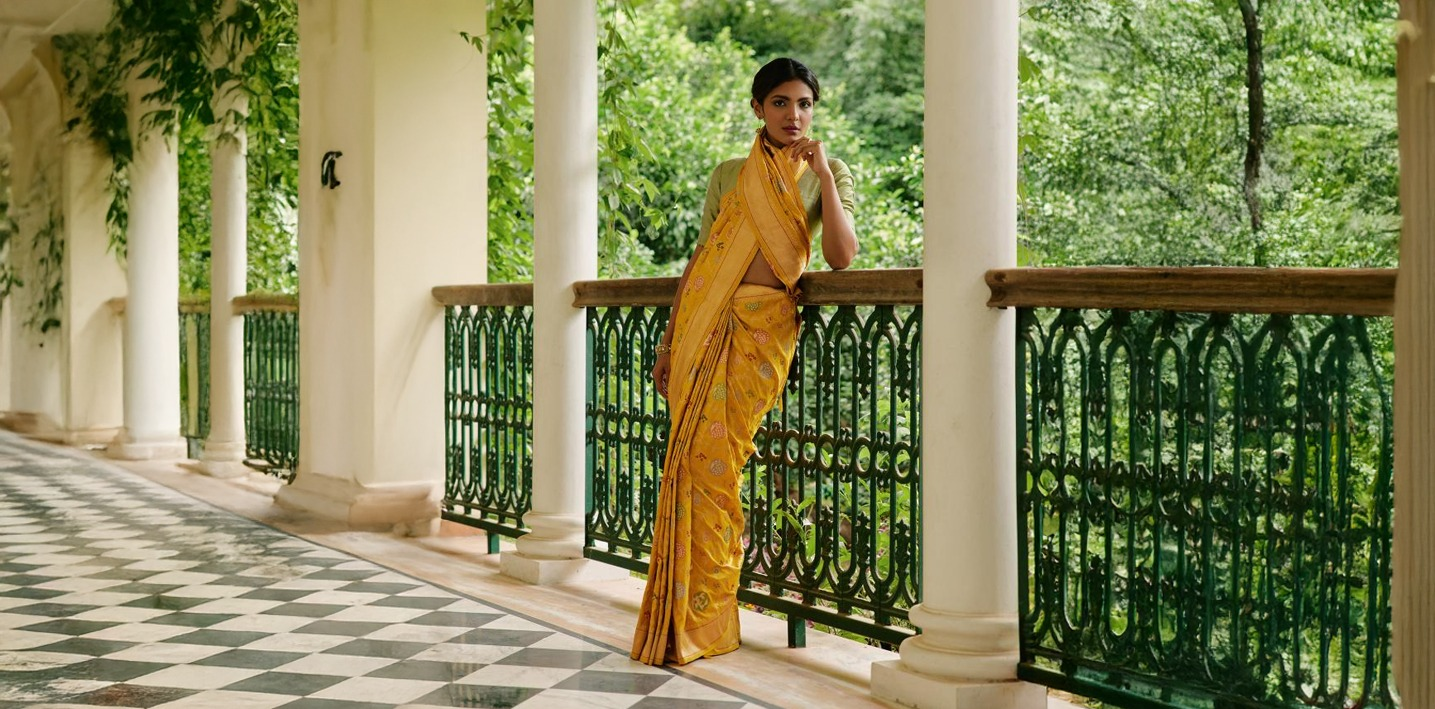
For many women, the wardrobe of their grandmother holds more than just fabric—it carries stories, memories, and the essence of family heritage. If you close your eyes and imagine your grandma, perhaps you see her in a beautifully woven Kanjivaram silk saree or a rich Banarasi silk ensemble, the delicate threads of which tell tales of generations gone by. These treasured pieces—often carefully passed down—serve as a living connection to a past filled with love, artistry, and craftsmanship.
With trends shifting faster than ever, handloom sarees don’t just endure for generations—they get cooler with time. Your grandma’s trousseau can serve as your inspiration to build one for you to transcend forward. Explore our collection of trousseau pieces that are the coolest heirlooms to own today.
The Banarasi
Banarasi’s have been a fan favourite for ages, and they would surely make it to your grandma’s top 3 picks for your trousseau. With roots in Hindu motifs and later influenced by Persian, Mughal, and Central Asian designs, Banarasi weaves are here to stay—and for long.
Whether you choose a red Banarasi sari or a more subdued hue, they have always been at the forefront of bridal fashion, with an increasing number of brides opting for these classic pieces in their wedding trousseau. Discover the Frontier Raas collection of modern Banarasi’s to preserve a bit of you through heritage.
The Kanjivaram
Kanjivaram sarees have long been a staple in every Indian grandmother's wardrobe. They are incredibly versatile and perfect for modern-day brides. A classic red or gold Kanjivaram saree remains one of the most popular choices for weddings. Recently, these sarees have also found a place in reimagination. Pairing them with contemporary accessories or a contrasting blouse adds a personal flair. They are as much about making a statement as they are about preserving a rich heritage. Browse through Frontier Raas’s exclusive collection of Kanjivaram silks to find your new favourite.
The Tussar
A good Tussar is recognized by its coarse texture and rare sheen. It has a rustic charm that makes it stand out. The light, breathable fabric is perfect for any weather, making it your grandma's favourite.
In recent times, Tussar silk has made a grand comeback. The intricate motifs and rustic charm have made it a fan favourite among the new generation of brides and bridesmaids. Whether it’s a classic Tussar silk saree for a wedding or a reimagined version, it fits perfectly for every occasion and climate.
Scroll through our curated range of Tussar silk sarees to find your ideal piece.
Wrapping up
So, why are your grandmother’s trousseau pieces cool now? In a world of fleeting trends, heirloom pieces like Banarasi silks, Kanjivaram sarees, and Tussar silks offer something more meaningful and timeless. Lucky are those who have a vintage collection of keepsakes from their loved ones.
These pieces can easily be styled up or down for any occasion, making them as relevant now as they were decades ago. They also serve as a wonderful way to keep memories close while adding a personal style twist. If you're looking to invest in an heirloom piece to pass down through generations, there’s no better time than now!
FAQ’s
1. What makes Kanjivaram sarees special?
Kanjivaram Sarees are known for their vibrant colors, rich texture, and intricate zari work. Traditionally handwoven in Kanchipuram, these sarees are taken to be heirloom pieces, for their longevity and cultural opulence.
2. How do I take care of my silk saree?
Silk sarees require gentle care to maintain their longevity.
Following are some tips-
- Always get your silk saree professionally dry cleaned to maintain its fabric and color.
- Store your saree in a dust bag to protect it from dust and sunlight.
- Don’t use perfumes or sprays directly on the fabric.
3. Can I wear a Tussar Silk saree in the summer?
Yes.Tussar silk sarees are light and breathable, and a great choice for summers.
4. Are Kanjivaram and Banarasi sarees similar in terms of weight?
Both Kanjivaram and Banarasi sarees tend to be on the heavier side, because of the intricate work used in the garment.
5. Why are heirloom trousseau pieces considered valuable?
Heirloom pieces like Banarasi silks, Kanjivaram sarees, and Tussar silks are valuable not only because of their high quality but also because they carry emotional and cultural significance. These garments are passed down through generations, preserving family history, traditions, and craftsmanship. Their timeless appeal makes them as relevant today as when they were first created.
6. What makes Kanjivaram sarees different from other silk sarees?
Kanjivaram sarees are distinct due to their rich, intricate weaving techniques, typically using mulberry silk, and their famous zari borders made with gold or silver thread.
7. What’s the difference between Banarasi silk and Tussar silk?
Banarasi silk is known for its intricate brocades, rich zari work, and vibrant designs, often used for formal and bridal sarees. It’s heavier and has a luxurious feel.
Tussar silk, on the other hand, is lighter, coarser, and has a natural, rustic charm, often found in more casual or semi-formal sarees.






